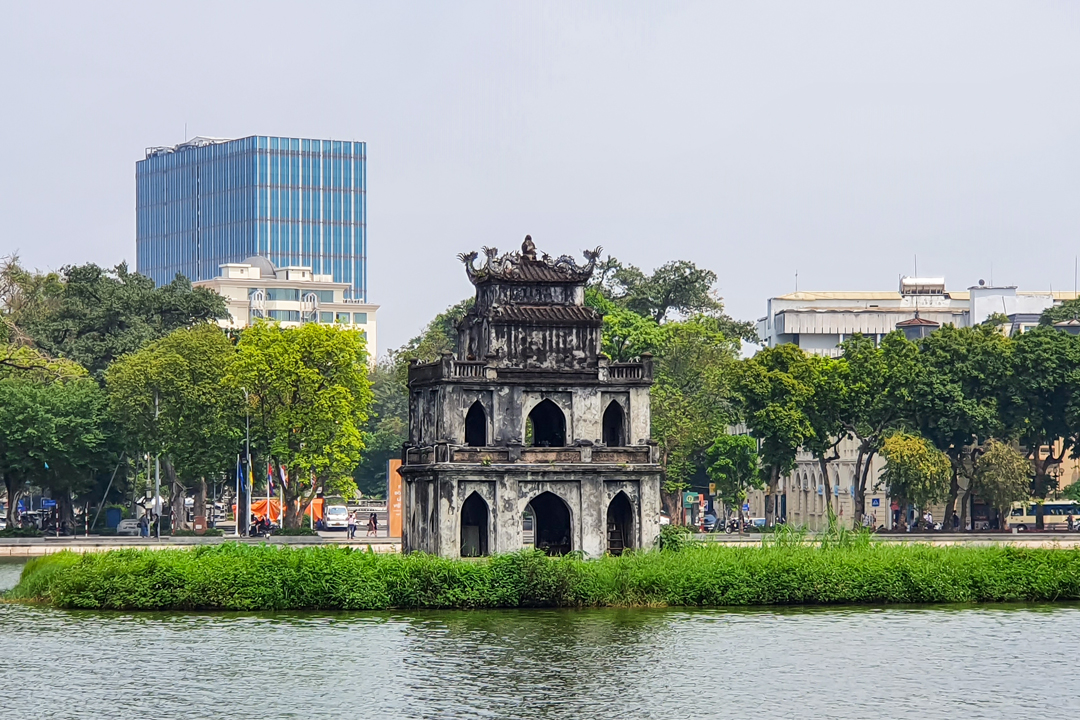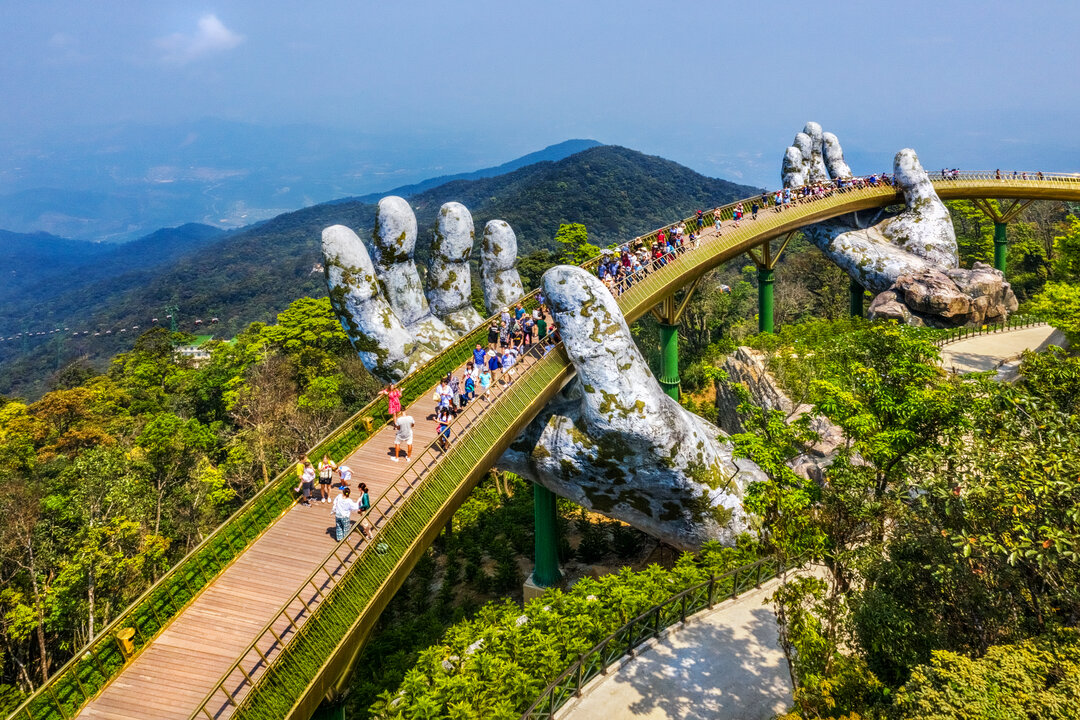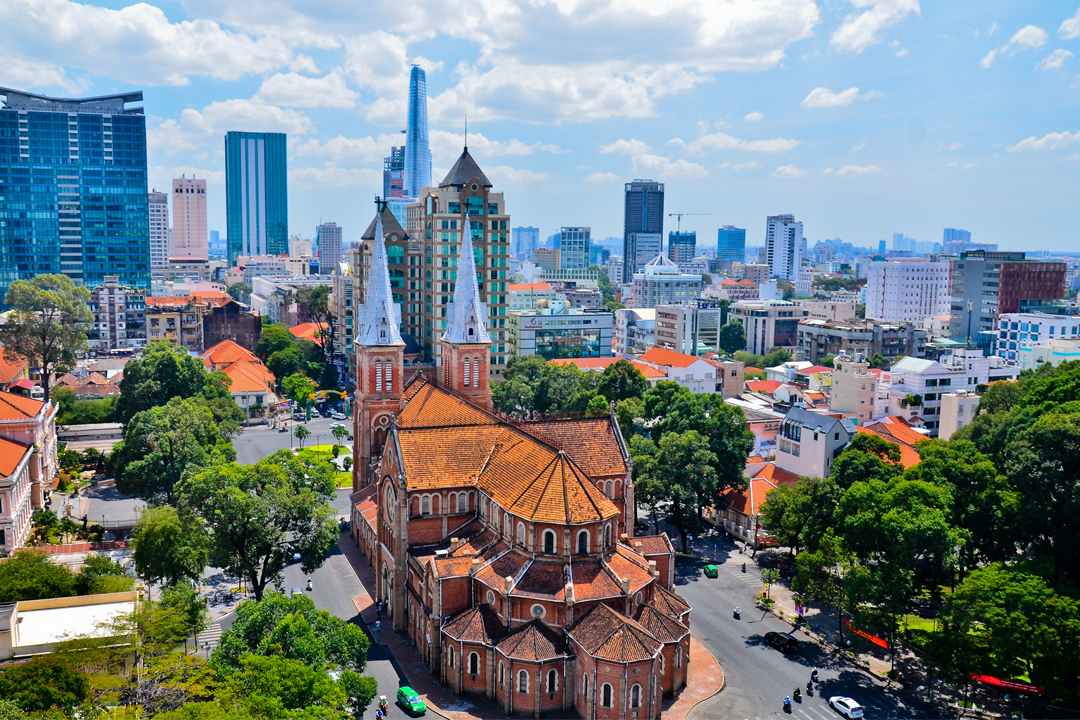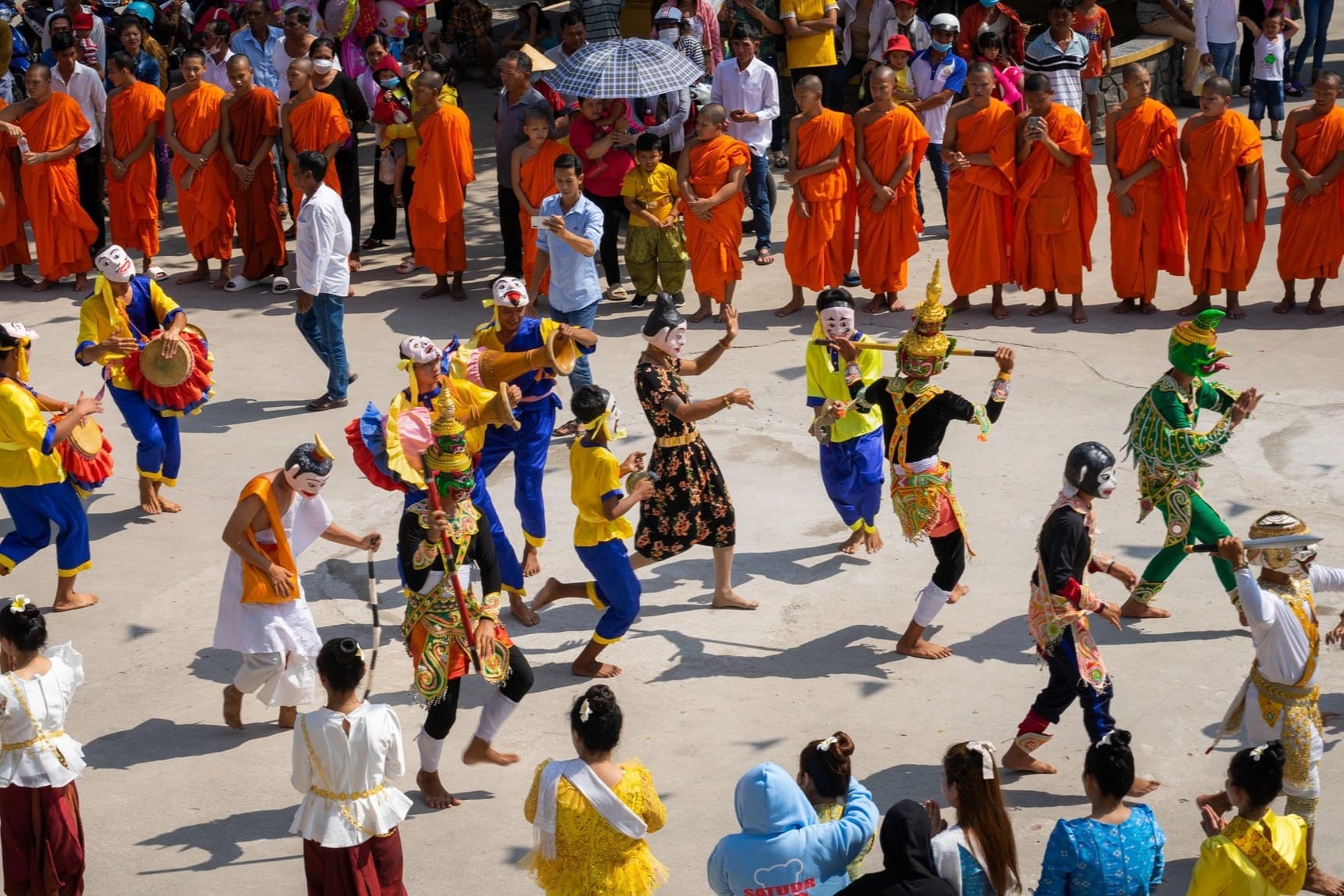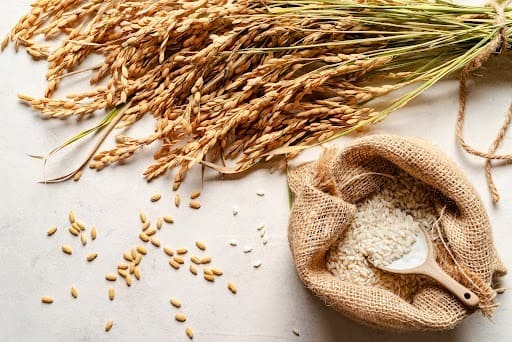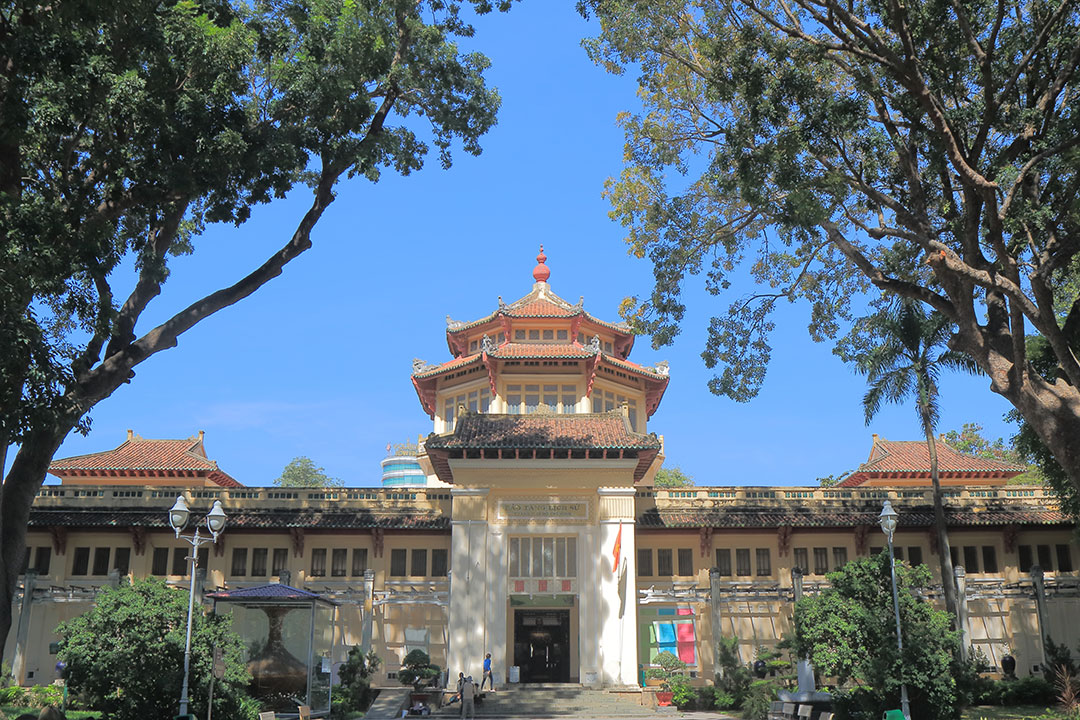History Museum Of Ho Chi Minh City: Exhibitions, Ticket Information & Travel Guide
The History Museum of Ho Chi Minh City is a must-visit destination for anyone eager to explore the city’s cultural depth and historical journey, reflecting Saigon’s transformation from a colonial outpost into a modern metropolis. Located near landmarks like the Reunification Palace and the Saigon Zoo, the museum offers more than relics, it immerses visitors in stories of dynasties, traditions, and heritage that shaped Vietnam’s past. With insights and travel tips from GTrip, your experience here becomes even more engaging and rewarding.
Overview of the History Museum of Ho Chi Minh City
The History Museum of Ho Chi Minh City stands as both a cultural landmark and educational hub, offering visitors insights into Vietnam’s past, its preserved heritage, and the best practical information for planning a visit.
Where is the History Museum of Ho Chi Minh City?
Location: 2 Nguyen Binh Khiem Street, Sai Gon Ward (formerly Ben Nghe Ward, District 1, HCMC)
The History Museum of Ho Chi Minh City is near the Saigon Zoo and Botanical Garden Park. It captures the city's journey from colonial roots to vibrant modern culture. The museum blends education and tourism, offering a journey through Vietnam's socio-political history and cultural influences shaping modern society. This overview delves into the museum's historical underpinnings, architectural essence, and pivotal role in cultural preservation.
Ticket prices & Opening hours
When planning a trip to the History Museum of Ho Chi Minh City, it’s essential to know the latest practical visitor information, including ticket prices and opening hours.
- Admission fees: Around 30,000 VND for adults; children and students enjoy a 50% discount (~15,000 VND). Always check the museum’s official channels for the latest updates or promotions.
- How to buy tickets: Available at the entrance, or book online through partners like Klook to save time and sometimes bundle with guided tours.
- Opening hours: Daily from 8:00 AM - 11:30 AM & 1:30 PM - 5:00 PM (last entry 4:30 PM).
How to get to there?
You can easily reach the History Museum of Ho Chi Minh City. In Ho Chi Minh City, you can take a bus for a budget-friendly option or a taxi, depending on your budget.
By motorbike: Traveling by motorbike is flexible and convenient. Instead of renting, you can easily book a ride with Grab, Be, or Xanh SM for direct pickup and drop-off. If you ride yourself, on-site parking is available for 5,000-10,000 VND ($0.20-0.40).
By bus: The most budget-friendly option. From Tan Son Nhat Airport, take Bus Line 49 for about 50,000 VND ($2). The ride takes around 37 minutes and stops near landmarks like Notre Dame Cathedral. Buses run frequently throughout the day.
By taxi: Widely available and comfortable. A trip from the city center costs 100,000-150,000 VND ($4-6) and takes about 8-10 minutes; from the airport, expect 250,000-300,000 VND ($10-12). Reliable choices include Vinasun, Mai Linh, or Grab.

Getting to the museum by motorbike is easy just book a ride via Grab, Be, or Xanh SM for a hassle-free drop-off, or park on-site for a small fee if you ride yourself
Historical background and founding
The Ho Chi Minh City Museum of History began in 1927 when the Societe des Etudes Indochinoises aimed to preserve collector Holbe’s valuable antiquities. To acquire the collection, the Society organised fundraising efforts and sought government approval to establish a museum.
On November 28, 1927, Governor of Cochinchina Blanchard de la Brosse signed a decree founding the Musee Blanchard de la Brosse (also known as the Pacha Da Lagos Museum) in Saigon. The museum operated under the Cochinchina colonial government and the scientific oversight of the Ecole Francaise d'Extreme-Orient (EFEO). It officially opened on January 1, 1929, with Jean Bouchot appointed as its first curator.
Over the decades, the museum underwent several name changes due to historical and political transitions. In 1945, it was renamed Gia Dinh Museum following Vietnam’s declaration of independence. In 1956, under the Republic of Vietnam, it became the National Museum of Vietnam and opened to the public in 1958.
After the reunification of Vietnam in 1975, the museum was preserved intact and officially renamed the History Museum of Ho Chi Minh City in 1979. After a few more changes, it was restored to its original name in 2013.
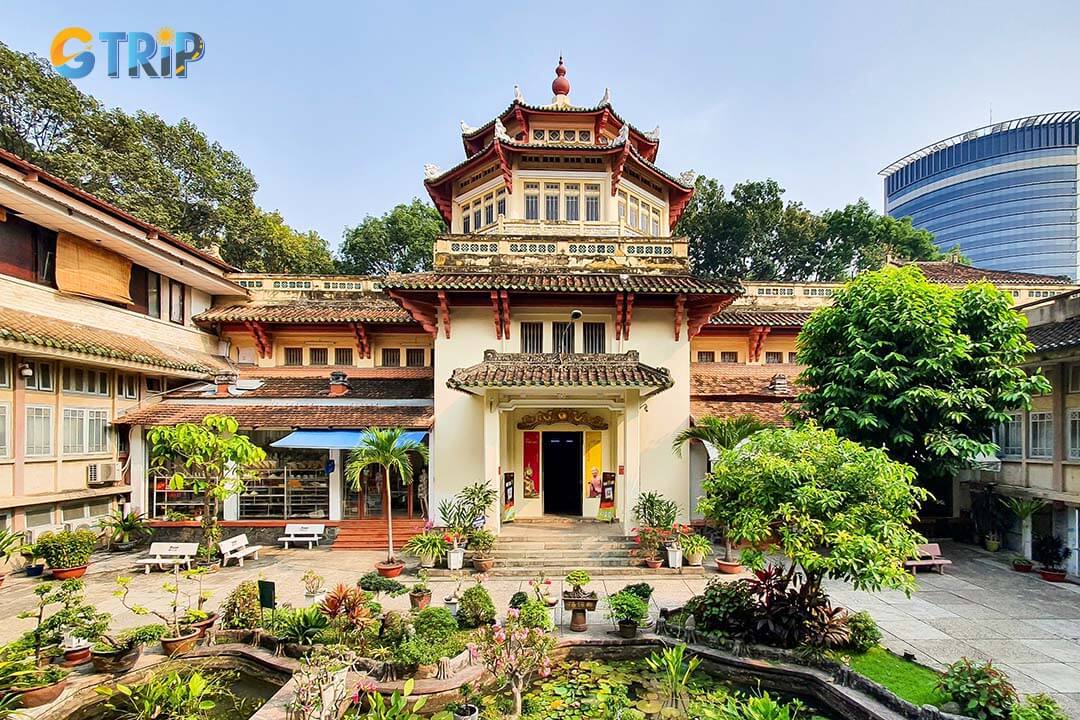
Ho Chi Minh City Museum of History has evolved through colonial, republican, and modern eras, preserving Vietnam’s rich cultural and historical legacy
Architectural style and design influences
The Ho Chi Minh City Museum of History is a stunning example of Indochinese architecture, blending Eastern and Western design elements in perfect harmony. Designed by French architect Auguste Delaval and constructed between 1927 and 1928, the museum’s main building stretches 70 meters long and 30 meters wide. Its layout features a distinctive octagonal tower at the center, serving as a focal point and anchoring the symmetrical wings on either side.
What makes this museum truly special is its elegant fusion of French colonial style with traditional Vietnamese motifs. The roof is covered with classic curved tiles, while decorative details include stylized phoenixes, dragons, and intricate patterns that reflect Vietnam’s rich cultural heritage.
In 1970, architect Nguyen Ba Lang added a modern extension behind the main building, shaped like a U and featuring an open-air garden with a pond in the center. This addition provides a peaceful, green space that complements the historic charm of the original structure.
Today, the Ho Chi Minh City Museum of History stands as both a national architectural treasure and a cultural landmark. Its unique design preserves valuable historical artifacts and offers visitors a beautiful and inspiring setting to explore Vietnam’s fascinating past.
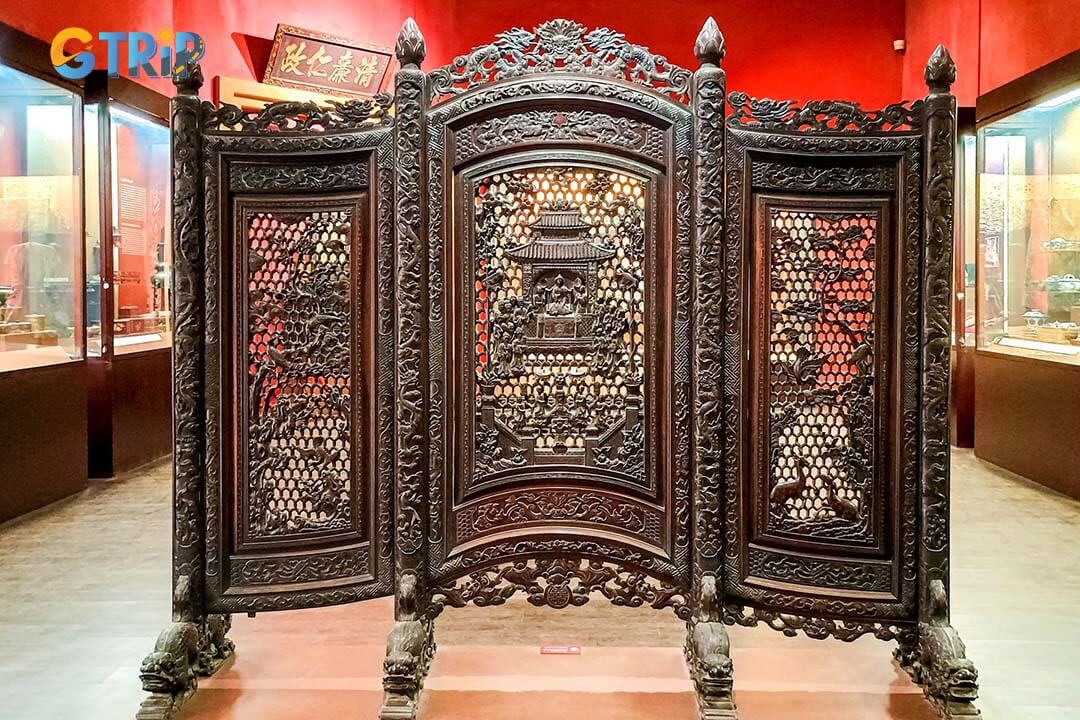
A masterpiece of Indochinese architecture of the museum blends French colonial elegance with traditional Vietnamese motifs in a harmonious and iconic design
Role in preserving local heritage
The museum plays an indispensable role in safeguarding Ho Chi Minh City's and, by extension, Vietnam's rich tapestry of cultural and historical heritage. Through meticulously curated exhibitions and educational programs, it fosters a comprehensive understanding and appreciation of Vietnam’s historical trajectory.
- Educational exhibits: The museum houses over 30,000 artifacts, covering a vast timeline from prehistoric times to the 20th century. This includes sculptures, ceramics, and significant relics that form the backbone of Vietnam’s manifold dynasties and periods, such as the Khmer artifacts and collections from the Champa civilization.
- Community engagement: Through interactive displays and culturally immersive activities, it aims to engage both local communities and international visitors. By doing so, the museum ensures that cultural heritage is not just preserved but lived, offering a dynamic space for dialogue and learning.
- Conservation and research: The museum actively engages in the conservation of artefacts and historical documents. Its research library offers invaluable resources for historians and students, reinforcing its status as a pillar for academic inquiry into Southeast Asia’s anthropological studies.
Overall, the History Museum of Ho Chi Minh City is more than just a repository of artifact. It’s an active institution that bridges new and old generations through shared cultural narratives. In our ever-globalising world, such institutions are crucial for maintaining a tangible connection to the past while navigating the complexities of modern identity.
Exhibitions and key artefacts to explore
The History Museum of Ho Chi Minh City is a treasure trove for those keen on delving into Vietnam’s multifaceted past. You are offered a panoramic view of the nation's history through a carefully curated collection of artifacts and relics, each room of the exhibition delivering its narrative. There are 17 rooms indoors, and one area is outside to explore:
Room 1 - Primitive Period (About 500,000 years ago - 2,879 BC)
This room covers Vietnam's earliest history, starting around 500,000 years ago with evidence of human habitation during the Old Stone Age, indicated by the discovery of ancient human teeth and stone tools. By the New Stone Age, around 10,000 years ago, the exhibits illustrate the shift from gathering to agriculture among early inhabitants, with the emergence of cultures like Hoa Binh and Bac Son.
Room 2 - Nation Building and Defence Period (2,879 BC - 938)
Focusing on the formation of Vietnamese culture, this room highlights the expansion of settlements and the development of metallurgy and wet rice farming following the Holocene marine transgression. By the late Bronze Age to early Iron Age (8th century BC - 2nd century), the Van Lang - Au Lac, Lam Ap (Champa), and Phu Nam cultures emerged. After 179 BC, the country endured over a thousand years of Northern domination, marked by uprisings and cultural preservation.
Room 3 - Ngo, Dinh, Tien Le Dynasties (939 - 1009)
Following the victory at Bach Dang River in 938, Ngo Quyen established the Ngo Dynasty (939-968). After disunity, Dinh Bo Linh reunified the country in 968, founding the Dinh Dynasty (968-981) and naming it Dai Co Viet. In 981, Le Hoan established the Tien Le Dynasty (981-1009), successfully resisting the Song Dynasty invasion.
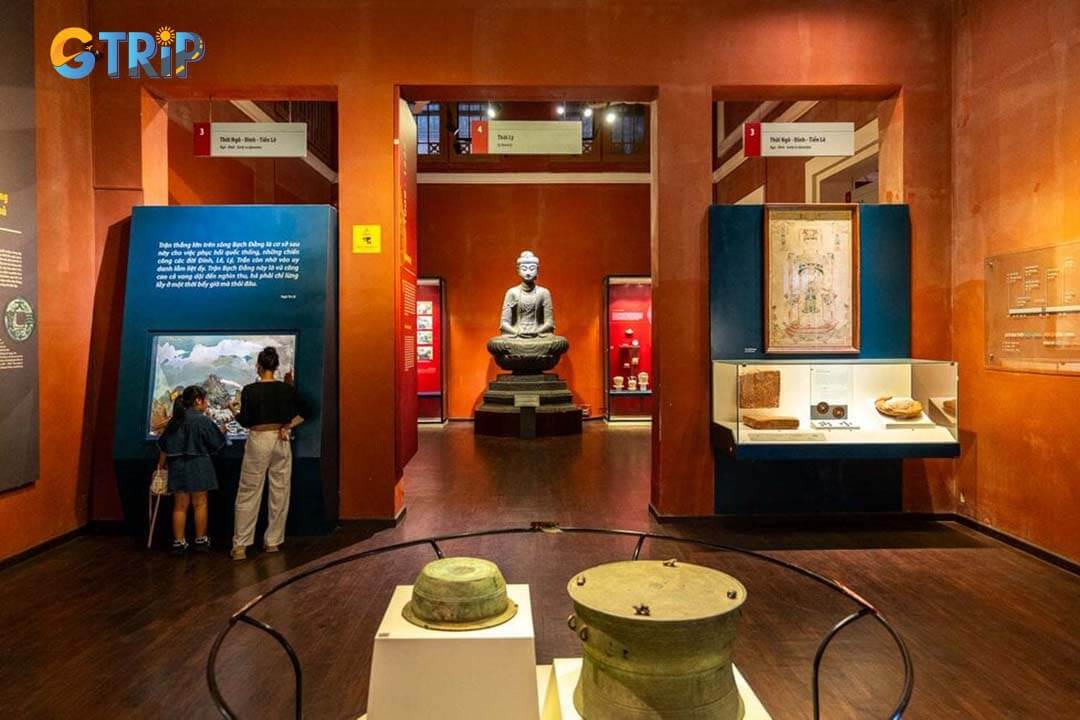
This exhibit traces the roots of Vietnamese culture, from early settlements and agriculture to the rise of ancient states and resilience under a millennium of foreign rule
Room 4 - Ly Dynasty (1009 - 1225)
The Ly Dynasty (1009-1225) marked a significant period of nation-building, with advancements in culture, religion, law, economy, and politics. In 1010, the capital was established in Thang Long, the country was named Dai Viet, and key institutions like the Van Mieu - Quoc Tu Giam were founded. The dynasty repelled the Song Dynasty invasion in 1077.
Room 5 - Tran and Ho Dynasties (1226 - 1407)
The Tran Dynasty succeeded the Ly in 1225, continuing national development. Under Tran’s rules, the administration and the military were strengthened, culture and arts flourished, and the Nom script emerged. The dynasty is notable for defeating three Mongol invasions (1258, 1285, 1288).
Room 6 - Champa Culture (2nd - 17th Century)
This room presents the art of the Champa kingdoms, influenced by India, which flourished along the central and southern coasts from the 2nd to the 17th centuries. These kingdoms prospered due to trade and showcased devotion to Buddhism and Hinduism, reflected in temples and statues.
Room 7 - Oc Eo Culture (1st - 7th Century)
This room exhibits the Oc Eo culture of the Mekong Delta from the 1st to the 7th centuries, highlighting connections between Southeast Asia and major civilizations. Archaeological finds reveal sophisticated local craftsmanship and the influence of Buddhism and Hinduism.
Room 8 - Cambodian Stone Sculpture (9th - 13th Century)
This room displays Cambodian stone sculptures from the 9th to the 13th centuries, the period of the Angkor civilization. The sculptures from Angkor Wat and Angkor Thom blend indigenous traditions with Indian cultural elements, reflecting aesthetic refinement and religious devotion.
Room 9 - Early Le, Mac, Le Trung Hung Period (1428 - 1788)
Covering the period from 1428 to 1788, this room includes the Early Le Dynasty, the Mac Dynasty, and the Le Trung Hung period. After Le Loi's victory against the Ming in 1428, the Le Dynasty began national reconstruction. From 1527, the Mac Dynasty seized power, leading to civil wars and the Trinh-Nguyen division.
Room 10 - Tay Son Period (1771 - 1802)
This room focuses on the Tay Son rebellion, which erupted in 1771 under the leadership of Nguyen Nhac and Nguyen Hue. By 1788, Nguyen Hue ascended the throne, and the Tay Son Dynasty worked to restore the economy and implement reforms.
Room 12 - Nguyen Dynasty (1802 - 1945)
In 1802, Nguyen Anh established the Nguyen Dynasty, which failed to modernize the country and eventually succumbed to French colonialism. From 1883, Vietnamese people continued to struggle for independence. In 1930, the Indochinese Communist Party was founded, leading to the August Revolution in 1945 and the establishment of the Democratic Republic of Vietnam.
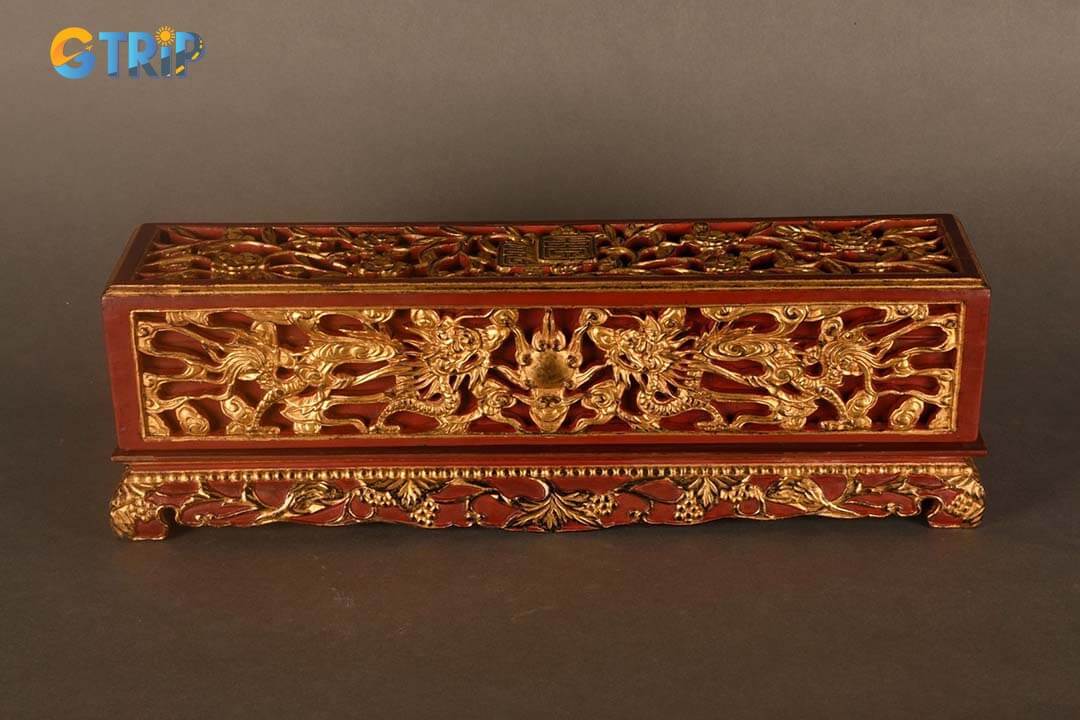
This section explores Vietnam's modern history, from the rise and fall of the Nguyen Dynasty to the fight for independence and the birth of the Democratic Republic in 1945
Room 13 - Duong Ha Collection
This room features the Duong Ha collection, assembled from the 1930s to the 1940s by Duong Minh Thoi and Ha Thi Ngoc to preserve cultural heritage. Later expanded by Duong Quynh Hoa and Huynh Van Nghi, the collection spans from prehistoric times to the early 20th century and was eventually donated to Ho Chi Minh City.
Room 14 - Ceramics from Some Asian Countries
This room showcases ceramics from various Asian countries, dating back approximately 10,000 years, displaying their development and cultural characteristics. The exhibits highlight the evolution of ceramics and their diverse roles in different cultures.
Room 15 - Mummy of Xom Cai (19th Century)
Discovered in 1994, the mummy of Xom Cai, dating back to 1869, is featured in this room. The mummy, identified as a Kinh Vietnamese woman named Tran Thi Hieu, offers insights into the burial practices of old Saigon.
Room 16 - Vuong Hong Sen Collection
This room displays the collection of Vuong Hong Sen (1902-1996), a cultural researcher and antique collector. His collection includes over 800 antiques, particularly 18th-19th century blue and white ceramics, and represents artefacts from Vietnam and other Asian countries.
Room 17 - Culture of Southern Vietnamese Ethnic Groups
Vietnam has 54 ethnic groups, with the Kinh majority and many smaller groups in the South. The southern region was originally home to Austroasiatic and Austronesian peoples, with Vietnamese and Chinese settlers arriving from the 16th century. After 1975, many northern ethnic groups moved south. This room showcases the traditional cultures of southern ethnic communities.
Room 18 - Buddhist Statues from Some Asian Countries
Buddhism began in India around the 6th century BCE and spread north (Mahayana) and south (Theravada) across Asia by the 1st-3rd centuries BCE. It blended with local beliefs, creating unique regional art and architecture. This room displays Buddhist statues from various Asian countries reflecting this cultural diversity.
Outdoor area 11: Cannon (18th - 19th Century)
This is area number 11, where place cannons, developed in 14th-century Europe, are large guns firing solid balls using gunpowder. Made of bronze or iron, they had barrels, firing holes, and wheels for movement. By the late 19th century, they evolved into rifled artillery with explosive shells for greater range and damage. This exhibit shows their historical development.
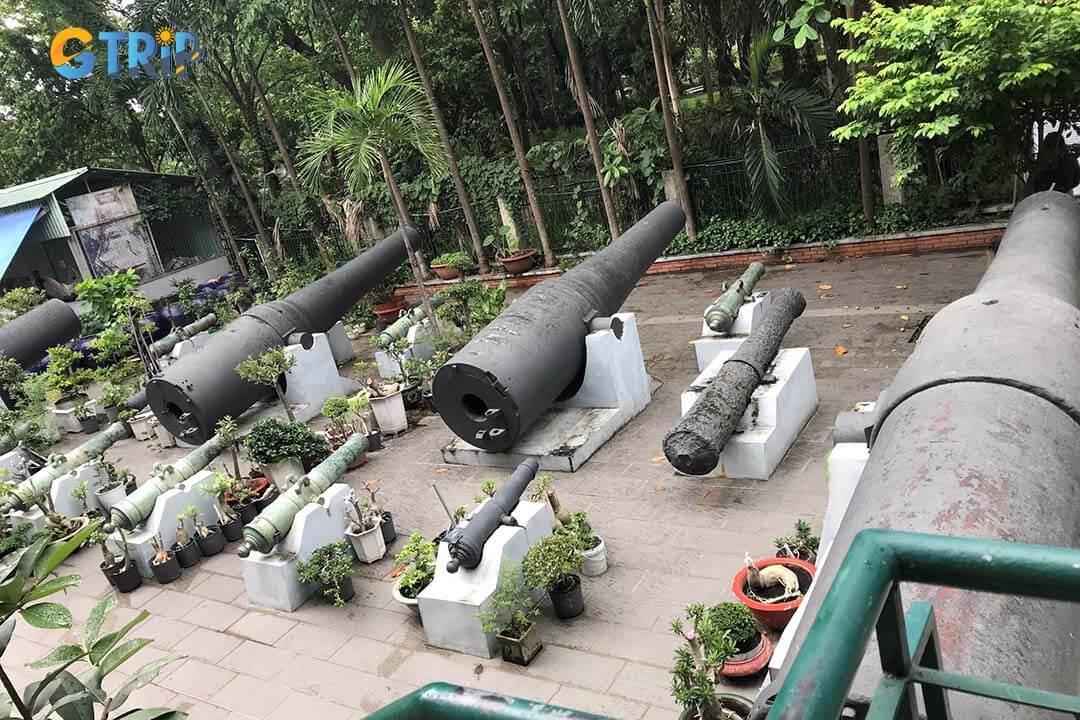
Area 11 showcases the evolution of cannons from 14th-century Europe to the late 19th century, highlighting their design, materials, and increasing firepower
Significance of the museum in Vietnamese culture
Nestled in the heart of District 1, the History Museum of Ho Chi Minh City is more than just a repository of ancient relics, it is a living narrative of Vietnam’s rich history.
Cultural impact on Ho Chi Minh City
The History Museum of Ho Chi Minh City enriches the city's culture, offering locals and tourists insight into Vietnam's rich history. Its strategic location, just a short distance from other important landmarks such as the Reunification Palace and the Saigon Central Post Office, enhances its cultural influence.
- Preservation of artifacts and relics: By curating collections that span Vietnam’s history from ancient to modern times, the museum plays a pivotal role in preserving important cultural artifacts and relics. This preservation is crucial for educating future generations about the diverse cultural influences that have shaped modern Vietnam.
- Cultural events and activities: The museum regularly hosts cultural events, talks, and workshops that engage the community. These activities foster a deeper understanding and appreciation of Vietnamese culture and history among residents. Such events also provide a platform for cultural exchange, where local historians and international experts can share insights.
Contributions to educational tourism
The museum is an indispensable resource for educational tourism in Ho Chi Minh City. It attracts a wide array of audiences, including students, historians, and casual visitors interested in Vietnam's history and cultural heritage.
- Educational programs and tours: With a comprehensive range of educational programs, the museum offers guided tours, workshops, and lectures designed to enhance learning. These programs are tailored to suit different age groups and interests, making them accessible and engaging for everyone from young students to seasoned history enthusiasts.
- Collaborations with educational institutions: The museum collaborates with schools and universities, creating a bridge between academic knowledge and real-world historical contexts. This synergy enriches educational curricula and provides students with firsthand experiences that textbooks alone cannot offer.
Establishing links between past and present
Perhaps one of the most profound impacts of the History Museum of Ho Chi Minh City is its ability to connect the past with the present. Through carefully curated exhibits, the museum tells the story of Vietnam's past and illustrates how these historical events continue to influence contemporary society.
- Exhibits that tell stories: The museum’s exhibits are designed to narrate the progression of Vietnamese society through various dynasties and colonial periods. For instance, the displays covering Vietnam’s dynastic periods provide insight into the nation’s governance and cultural practices, which still influence modern Vietnamese society today.
- Highlighting colonial influences: By showcasing artifacts from Vietnam’s colonial past, the museum helps visitors understand the complexities of Vietnam’s historical development. This understanding fosters a nuanced appreciation of Vietnam’s fight for independence and its ongoing journey towards modernization.
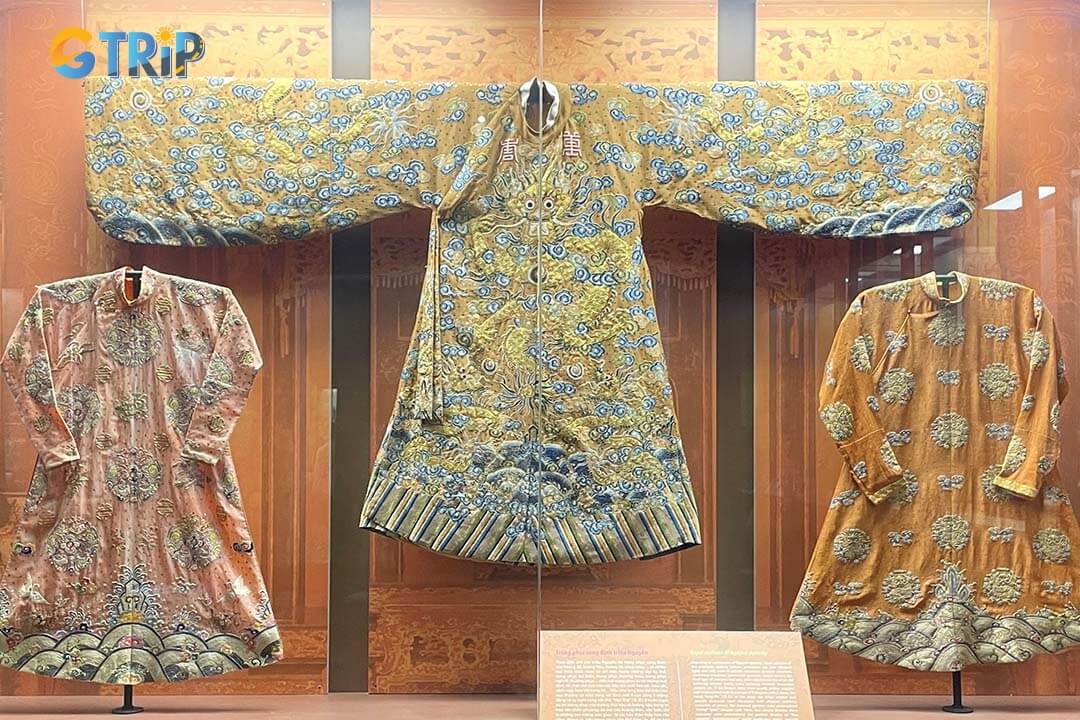
The museum bridges past and present through exhibits that trace Vietnam’s dynasties, colonial history, and their lasting influence on modern society
Nearby attractions from History Museum of Ho Chi Minh city
Exploring the history museum of Ho Chi Minh City provides an enriching introduction to the cultural and historical tapestry of the region. However, its location in a bustling part of the city makes it convenient for visitors to extend their journey into nearby attractions that are often included in Ho Chi Minh City tours, enhancing their understanding of Vietnam's dynamic cultural landscape. This section will delve into several key aspects of local attractions and their cultural significance.
Sai Gon Zoo & Botanical Gardens
The Saigon Zoo and Botanical Gardens, established in 1865, is one of the oldest zoos in the world and a cherished green space in Ho Chi Minh City. Spanning over 20 hectares, it houses more than 1,000 animals and over 2,500 species of trees and plants. The zoo serves as a recreational spot and as an educational and conservation center. You can stroll through shaded walkways, enjoy family-friendly attractions, and explore themed botanical areas. Its peaceful atmosphere makes it a perfect escape from the city’s bustle. Conveniently located in District 1, it's also just steps away from the History Museum.

The Saigon Zoo and Botanical Gardens, founded in 1865, is a historic green space in District 1, home to over 1,000 animals and 2,500 plant species
Independence Palace
The area surrounding the museum is rife with historical landmarks that vividly recount Vietnam's past and its evolution to the present day. One notable site is the Independence Palace (Reunification Palace), an iconic symbol of the end of the Vietnam War. Known previously as the Independence Palace, it stands as a monument to Vietnam's tumultuous journey toward peace and unity. You can explore its well-preserved 1960s architecture and gain insights into pivotal moments in Vietnamese history through detailed exhibits.
War Remnants Museum
Complementing the exhibits at the history museum, other museums nearby offer in-depth perspectives on Vietnam’s rich heritage. The War Remnants Museum, for example, provides a sobering overview of the Vietnam War through impactful displays, including wartime photographs and military equipment. This venue is essential for understanding the broader narratives of conflict and reconciliation in Vietnamese history.
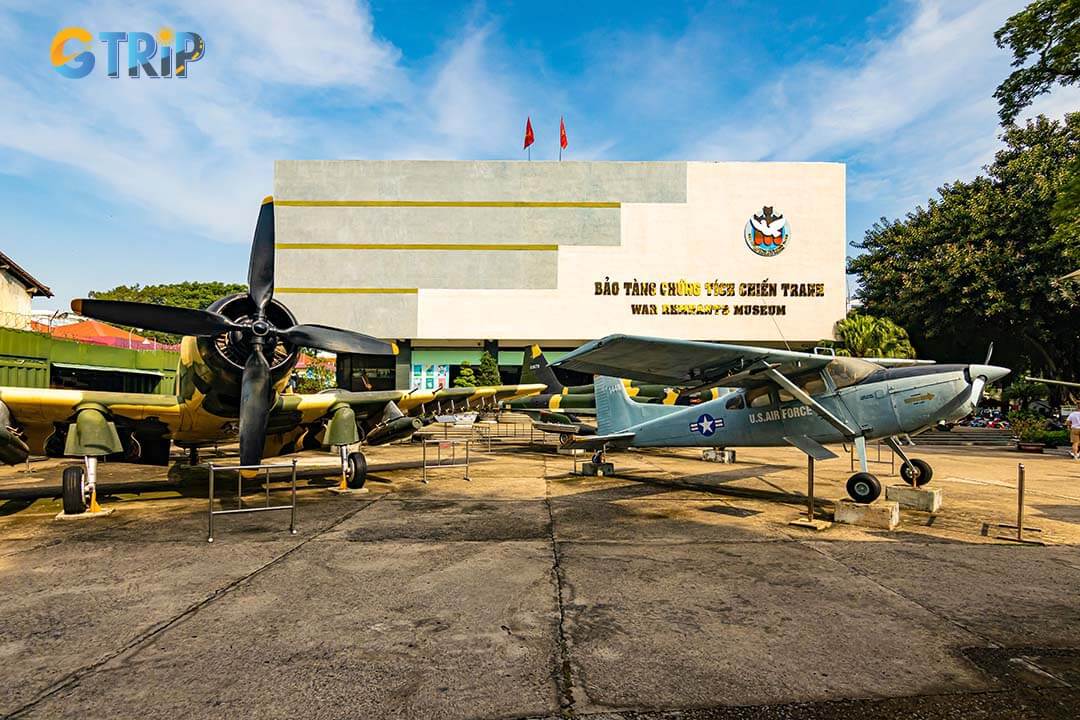
War Remnants Museum offers deeper insights into Vietnam's heritage, with impactful exhibits on the Vietnam War, conflict, and reconciliation
FAQs about the history museum of Ho Chi Minh City
For those planning to visit the History Museum of Ho Chi Minh City and eager to make the most out of their journey, a round-up of FAQS often proves invaluable. Here are some of the pressing questions visitors usually have.
Is the museum family-friendly?
Yes, the museum welcomes visitors of all ages, with stroller-friendly spaces and exhibits designed to spark children’s interest.
Are there facilities for children?
Yes, families can find rest areas, air-conditioned spaces, and some interactive exhibits for kids.
Are there facilities for visitors with disabilities?
Yes, the museum offers wheelchair-accessible paths, ramps, and restrooms; contact staff in advance if needed.
Where can official contact information be found?
Official contact details are available on the museum’s website, including phone, email, and address.
How to access official resources for visitors?
The museum’s website provides floor plans, exhibition details, and tour information to help plan your visit.
The History Museum of Ho Chi Minh City is not only a treasure trove of Vietnam’s history but also a welcoming destination for all kinds of travelers. With well-curated exhibits, family-friendly facilities, and convenient transport options, it offers an engaging way to explore the nation’s cultural heritage. Surrounded by iconic landmarks, the museum provides a deeper understanding of Vietnam’s past while enriching any visit to the city. For the best experience, book your Ho Chi Minh City tour with GTrip - Vietnam Travel Agency, where expert guides and tailored itineraries bring the stories of this vibrant city to life.

